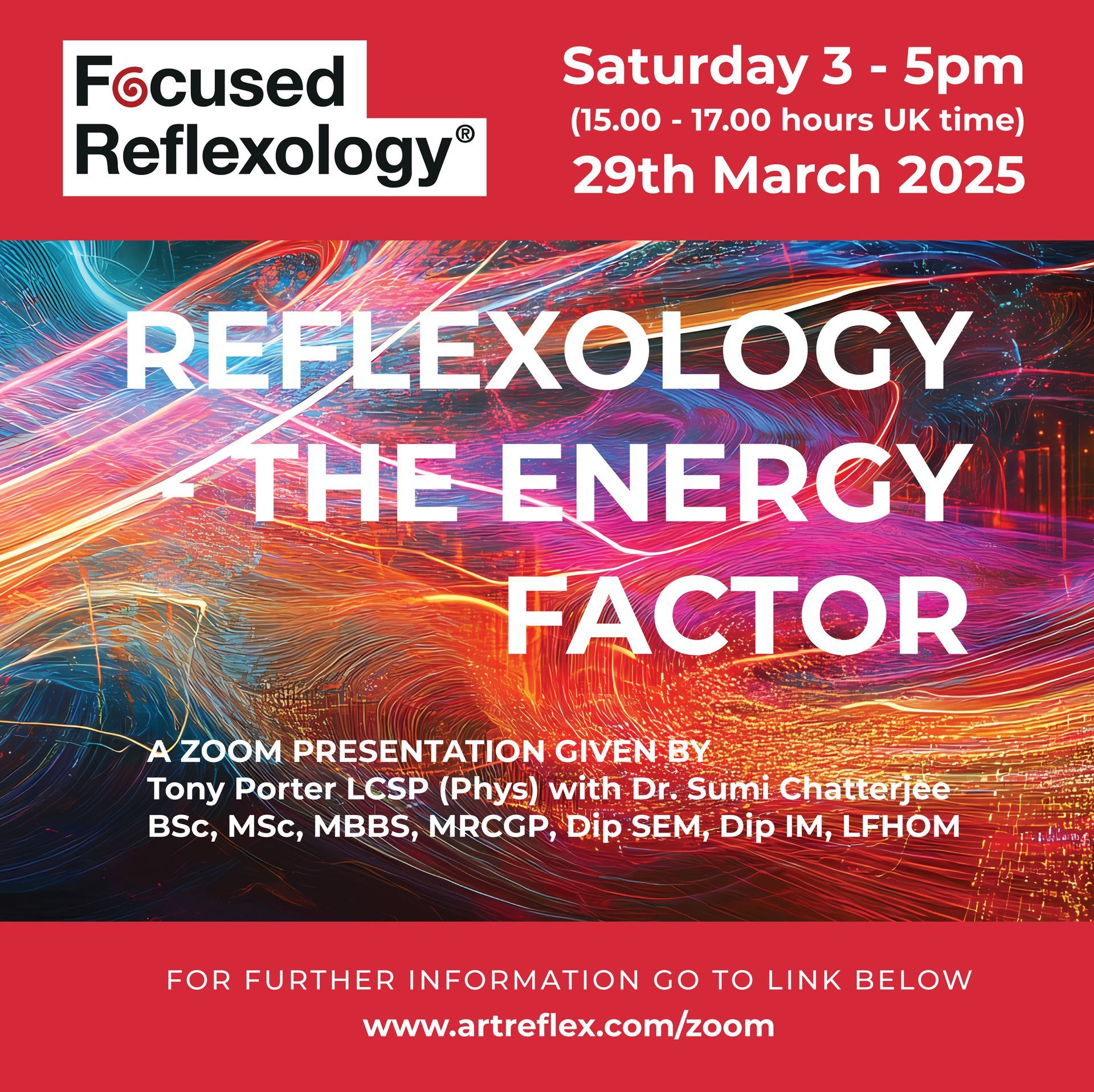The Evolvement of Focused Reflexology
Part 1
I want to begin this blog by saying that the main reason why I have been media- dormant for quite some time is because of the upsurge of people wanting reflexology treatment. I have been literally ‘run off my feet' with clients (or patients as I term them). After 47 years of being ‘before the reflexology helm’, I had planned to cut down somewhat on giving treatments and devote more time to reading, study, and writing, not forgetting exercise. However former patients came out of the woodwork asking for treatments, before long I was back full time!
Perhaps it is because of the fear that people are put under during these uncertain times that make them want treatment, perhaps also it is because of being ‘locked down’ and inactive which has caused a general deterioration to health, (although being in this situation does not mean a state of inactivity need occur)! However, whatever the cause, there does seem to be something of a paradigm shift in the acceptance of reflexology, people are discovering the magic of the therapy.
It will be worth here to enlarge on this, which may be of value to those on the first rungs of the ladder to their reflexology career, and also to those who have been long established in the therapy.
Over the expanse of my career, I have been able to experience the different phases that reflexology has gone through. It is a subject I have mentioned before in past blogs, but at this time it will be good to rekindle the subject.
Let’s travel back to the times of Eunice Ingham 1938 till the late 1960s when I first put my hands on a pair of feet.
In those days the purpose and indeed the recognition of reflexology was to heal various physical ailments. For this reason, treatment sessions were focused on this purpose. Sessions were not only geared towards relaxation as they mostly are in these days. The relevant reflexes were, to use a euphemism ‘worked' out. I shall take a pause here as it is this which makes the demarcation line between the two ‘ages’ of reflexology.
Part 2
I have been fortunate, because of the duration of my career, to have a clear vision of these two ages, and through this, I can see the golden thread that led to the formation of A.R.T. (Advanced Reflexology Techniques) and to its present incarnation of Focused Reflexology®
At a time in my career, I was head-hunted to work in the medical practices of some medical luminaries in and around the medical area of London’s Harley Street without going into too much detail, my purpose was to help people heal from whatever they presented. The idea was to avoid medical intervention as much as possible. My patients were often being monitored during treatment, or otherwise medically examined after. Treatment sessions had to be around 30-40 minutes and
I would be expected to see 12 patients each day, and sometimes more.
In this type of situation, I had to get on with the job of giving these people the most effective treatment sessions possible in a limited time. This could not be achieved by working all the areas of the feet in the usual way. What was needed was to first identify the ‘disturbed’ reflexes. Once these had been identified, only the ‘disturbed’ reflex areas received attention during each session. Ok, the other areas would receive attention but only minimally to give a contrast from the rather intensive attention being given to the ‘disturbed’ reflexes.
I also had to either adapt or create different types of techniques to be able to effectively work the reflexes. There is an infinite range of types of feet and an equally infinite range of types of reflexes all needing specific contacts.
There is no ‘one size fits all’ technique in reflexology! at least there should not be. And yet the majority of reflexologists today go through the same routine on each client day after day.
Once I became experienced in identifying the ‘disturbed’ reflexes and making these the main subjects of attention, it enabled treatments to be much shorter, and most importantly mote therapeutically potent.
I use the term disturbed to describe reflexes that have a distinctive ‘feel’ or texture about them compared to the adjacent tissue. These distortions may be caused by a variation in the electrical potential of the reflex.
I discovered, that by using various types of contact consistently to the disturbed reflex, the’ texture of the reflex would normalise, bringing about a release, which would be experienced by the receiver. This release could be far distal to the reflex.
I also became aware that a painful reflex was not necessarily indicative of a problem in its corresponding area. In fact, I go as far as to say that sensitive reflexes can be a favourable indication in many cases.
The frequency of treatment sessions is another and most important factor to consider.
Working in this manner brings out the full potential of reflexology which is not based only on the relaxation applications — in this case, the relaxation comes after the session. These will be the subjects of another article or an online discussion.
It was through this experience that the techniques and protocol of A.R.T and Focused Reflexology® were born.
Tony Porter© 2021











